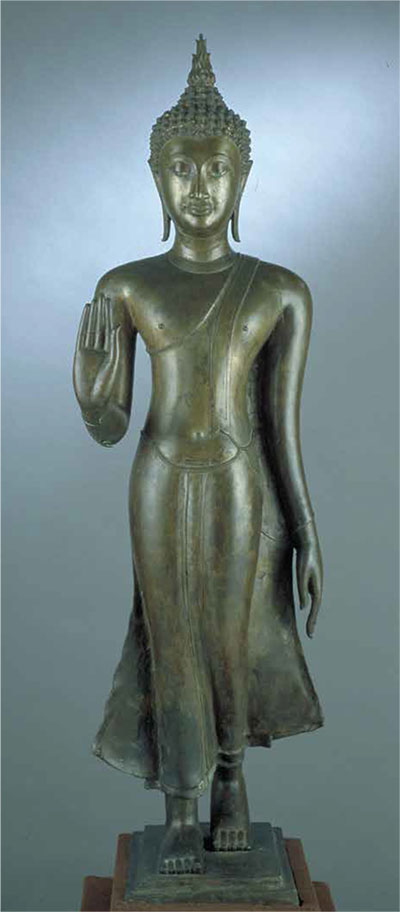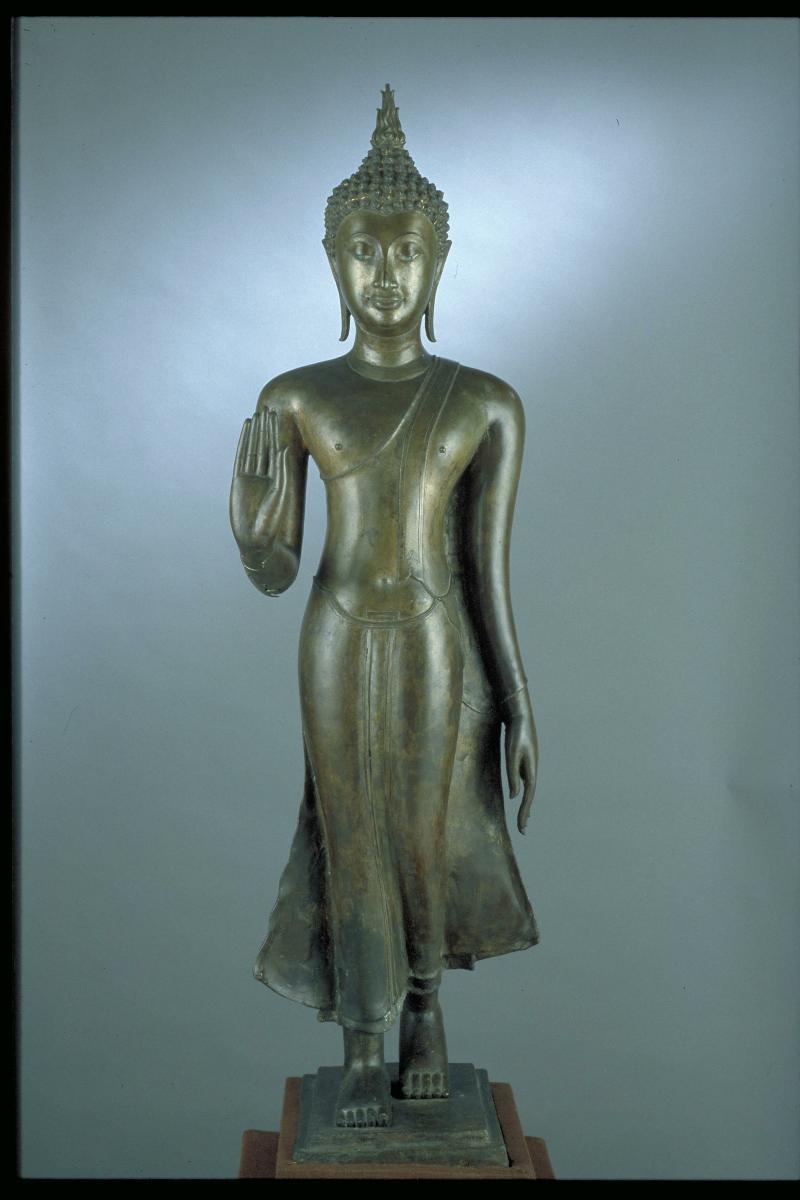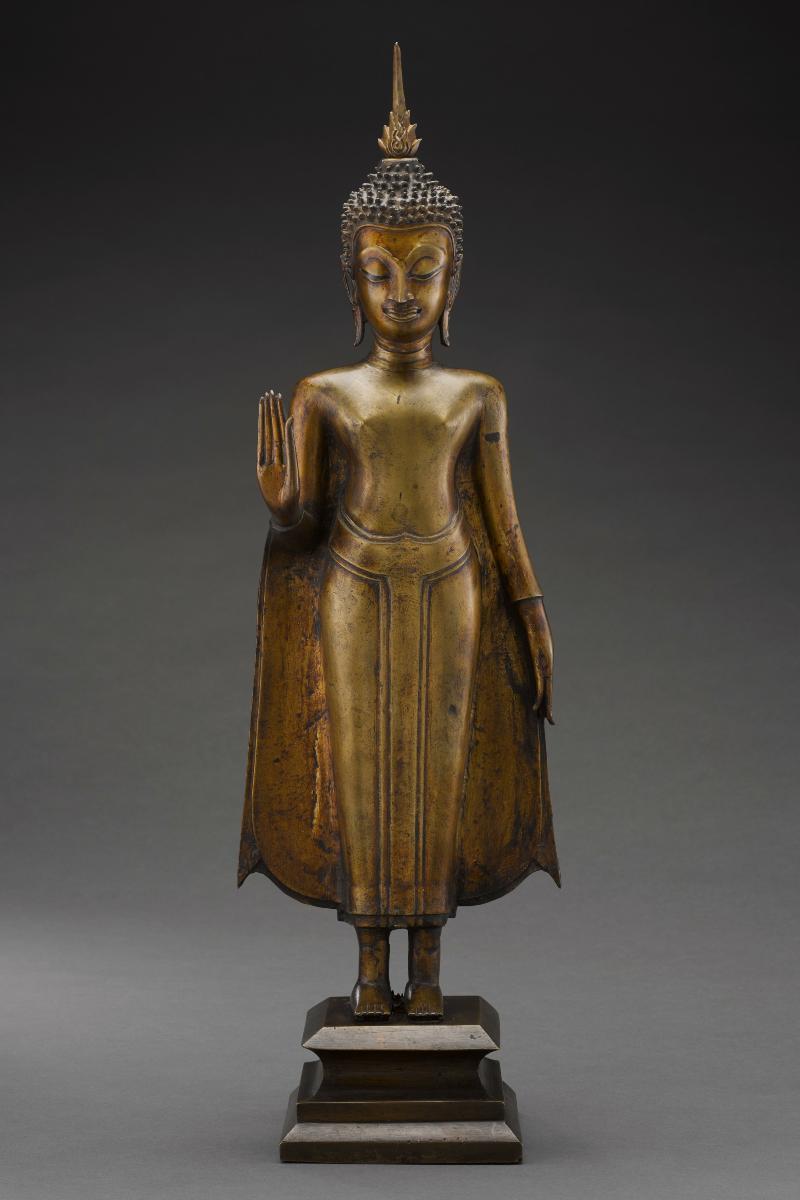Sculpture of Walking Buddha, Sukhothai, north-central Thailand, bronze 15th–16th centuries.
Collection of Asian Civilisations Museum.

This image of the Walking Buddha or cankrama ('walking back and forth') is a classic image of the Sukhothai Kingdom (1200-1350), which is today idealised in the Thai psyche as a golden age where Buddhism, the land, and its people flourished under the rule of benevolent Buddhist kings. Buddha is depicted in mid-stride, his right foot forward, and right hand in abhaya mudra (gesture of fearlessness, a hand gesture where the right hand is held upright with the palm facing outward). The left arm curves to accentuate the sense of fluid movement. The robe is barely visible except for fine outlines, and a flowing hemline. The ushnisha, or bump on the head which symbolises his enlightenment, rises to a flamed cintamani or top-knot.
Images of the Buddha were made for temples by donors in the belief that they would acquire merit for their next life. This image has been interpreted in various ways. It is thought to refer to Buddha's return from Tavatimsa Heaven where he preached the doctrine to his mother, and is also associated with meditation and magical powers, as found in stucco reliefs at temples in Sukhothai and the twin town of Si Satchanalai. The origins of the Walking Buddha remain unclear and the dating of several images continues to be questioned. More recently it was proposed that the city of Sukhothai was not abandoned in 1438 with the rise of Ayutthaya, but instead flourished until 1786 and that many architectural images of the Walking Buddha were probably produced during the 18th century.
This is an extract from "The Singapore Story through 60 objects" written by Kennie Ting, Director, Asian Civilisations Museum and Peranakan Museum & Group Director of Museums, National Heritage Board. This article was first published in Cultural Connections Volume IV 2019 by Culture Academy Singapore.















